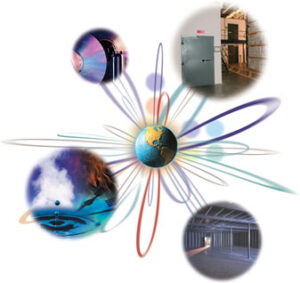
Managing a World of Risk
Successfully managing the modern world of risk means that vital information must be protected and accessible at a moment’s notice.
We live in a world of constant and exciting change. Indeed, rapidly advancing technology means that life moves at a lightning-fast pace, as virtually everything we do — from our motor vehicle registration to our retirement investing — is recorded in bits and bytes, rather than pen and ink.
Clearly, information is critical in this modern digital age, and for entities operating in this data-rich environment, protecting that information can mean the difference between incredible success and considerable struggle. Oftentimes, the failure to adequately protect such data can impact their very survival.
Indeed, the old model of storing records in warehouses suitable for storing warehouse commodities is no longer acceptable, especially for electronic records. This is especially true against the backdrop of recent media headlines and courtroom rulings that hold corporate officers legally and financially accountable for protecting and producing their company’s vital records.
CEOs and Boards of Directors must recognize their responsibility to protect the records that reflect their good stewardship. Furthermore, they must come to understand that successfully managing the modern world of risk means that vital information must be protected while remaining accessible at a moment’s notice.
In a tangible sense, companies must be aware of the many physical forces that can damage, if not completely destroy their data, and take steps to protect themselves from these potential threats. It doesn’t take a catastrophic fire to destroy computer media and other valued records; fluctuation in temperature or humidity, dust particles, and UV light can be just as dangerous and ultimately as devastating.
Climate Control Issues
Many people fail to realize that computer media is not permanent. Things like tape backups, CD-ROMs, and other media, last only about five to eight years if they are not stored in the proper environmental conditions. Microfilm is also susceptible to damage from improper storage environments. Temperature and humidity need to be precisely controlled for diazo and silver halide film and they should be isolated from each other as well as from computer media or other source material that may produce gasses that result in degradation and cause redox blemishing.
- Digital media breaks down in 5 to 8 years if not protected properly.
- Concrete vaults destroy digital media when high temperatures force steam into the vault chamber.

It is important to understand that, in these times, there is a need for contextual protection in addition to protection of the information in its entirety. In terms of the possible legal consequences, the loss of even a part of your business information due to improper storage could be damaging, to say nothing of the reproduction costs associated with returning your digital information to a useable condition.
Unfortunately, these issues are compounded by the fact that even businesses that understand the need to protect their data mistakenly assume that concrete vaults that protect paper documents will also protect digital media. This just is not the case. In a fire, a concrete vault will fill with steam as a result of the breakdown in the cement bond in the concrete, meaning the atmosphere inside of the vault will reach 212°F and 100% relative humidity. While such conditions may be acceptable for paper, digital media is damaged at temperatures greater than 125°F and relative humidity above 80%.